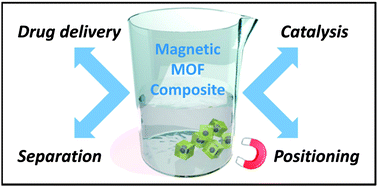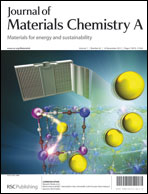Applications of magnetic metal–organic framework composites
Abstract
The high and regular porosity of metal–organic frameworks (MOFs) provides exceptional properties suitable for technological applications. The increasing interest of the scientific community is based on the exploration of these advantageous properties for industrial applications. Pure MOFs are specifically designed to offer a huge surface area; such a high specific surface area has been explored and exploited for gas storage, separation, or catalysis in a variety of chemical processes. A different and promising scientific trend aims to combine MOFs with extrinsic functionalities such as functional nanoparticles; this strategy enables the preparation of new nanocomposite materials with unprecedented properties. An interesting case is offered by the synergic combination of magnetic particles with MOF crystals. In the resulting nanocomposite material, the adaptive functional responses can be triggered by an external magnetic field. In this context, different protocols have been developed for the efficient preparation of magnetic framework composites (MFCs), a class of materials that combines magnetic nano- or micro-particles with MOFs crystals. This application paper highlights the progress on MFCs for drug delivery, environmental control, catalysis, sensing and miniaturized device fabrication.


 Please wait while we load your content...
Please wait while we load your content...